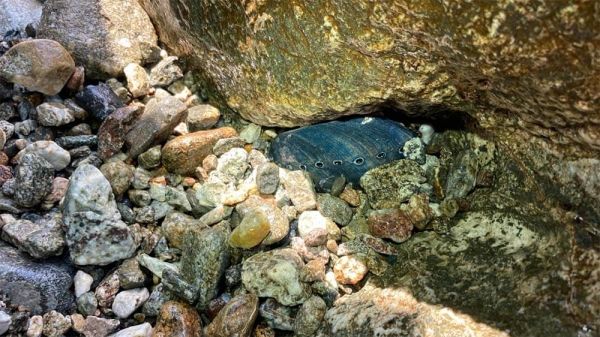The black abalone (Haliotis cracherodii) is one of several abalone species, a type of marine snail, that occurs in California coastal waters. Black abalone typically occur in rocky intertidal habitat, the area between high and low tides. Abalone use their large, strong muscular foot to crawl over and cling to rocks; this foot and the rest of the body are covered by a single shell, shaped like an upside-down bowl. Indigenous communities harvested black abalone and used the shells to make fish hooks or to trade with inland tribes. Abalone shell trade routes have been documented from Southern California to east of the Mississippi River.
Black abalone only occur along the western coast of North America, from just north of San Francisco in California to Bahia Tortugas and Isla Guadalupe in Baja Mexico. This species experienced major population declines caused by a lethal disease known as withering syndrome, which spread throughout its entire range. The black abalone was listed as endangered under the Endangered Species Act in 2009.
The Big Sur coastline in Monterey Bay National Marine Sanctuary represents one of the largest healthy populations of black abalone. However, this population faces additional threats from landslides and rain-induced debris flows.
Continue reading at NOAA National Marine Sanctuaries
Image via NOAA National Marine Sanctuaries


